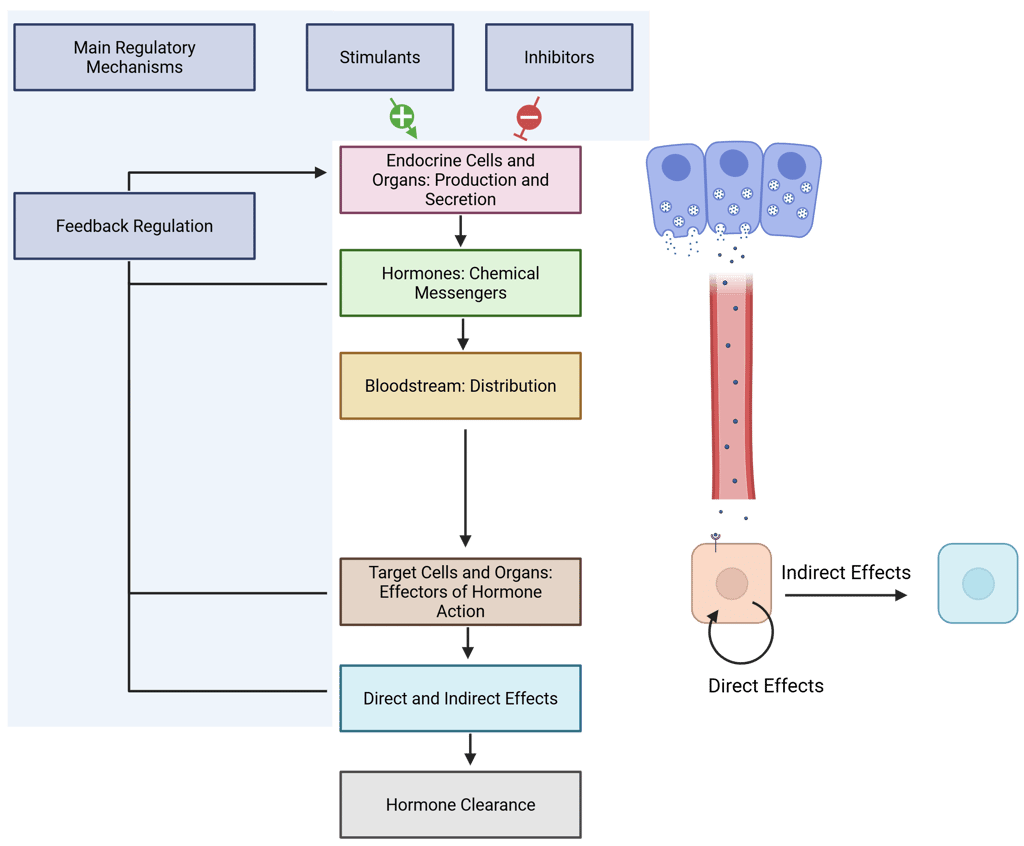Definition of Endocrine Systems and Organs
The endocrine system refers to a network of specialized cells and glandular tissues distributed throughout the body that produce and release hormones—chemical messengers that travel through the bloodstream to influence the activity, function, and coordination of distant target cells, tissues, and organs. This mode of signaling, where substances exert effects far from their site of synthesis, characterizes endocrine action (in contrast to other biochemical signaling mechanisms like auto- and paracrine effects). The endocrine system plays a central role in maintaining homeostasis, supporting growth and development, regulating metabolism, and orchestrating reproductive processes. While it often operates through complex feedback loops and regulatory mechanisms the key components of the endocrine system are always the same, and are outlined below.
Endocrine Cells and Organs – Sites of Hormone Production and Secretion: Specialized tissues that synthesize and release hormones into circulation.
Hormones – Chemical Messengers of Endocrine Signaling: Bioactive molecules that transmit regulatory information from endocrine cells to target tissues, often acting at distant sites.
Vascular System – Distribution Pathway for Hormones: The circulatory system transports hormones throughout the body, enabling systemic communication.
Target Cells and Organs – Effectors of Hormonal Action: Cells equipped with specific receptors that respond to hormonal signals by initiating physiological changes.
Electrochemical and Biochemical Signaling – Enabling Endocrine Signal Transmission and Regulatory Control of the Endocrine System: Mechanisms that transmit endocrine signals to target cells, monitor internal conditions, and regulate hormone levels through feedback loops and other modulatory stimuli.


Illustration 1: Basic Components of the Endocrine System and their respective roles.
References
All Illustrations were created in https://BioRender.com
For References, visit the Section "References" in General Principles of Clinical Endocrinology
© 2025 EndoCases. All rights reserved.
This platform is intended for medical professionals, particularly endocrinology residents, and is provided for educational purposes only. It supports learning and clinical reasoning but is not a substitute for professional medical advice or patient care. The information is general in nature and should be applied with appropriate clinical judgment and in accordance with local guidelines.
All of the content is independent of my employer.
Use of this site implies acceptance of our Terms of Use
Contact us via E-Mail: contact@endo-cases.com